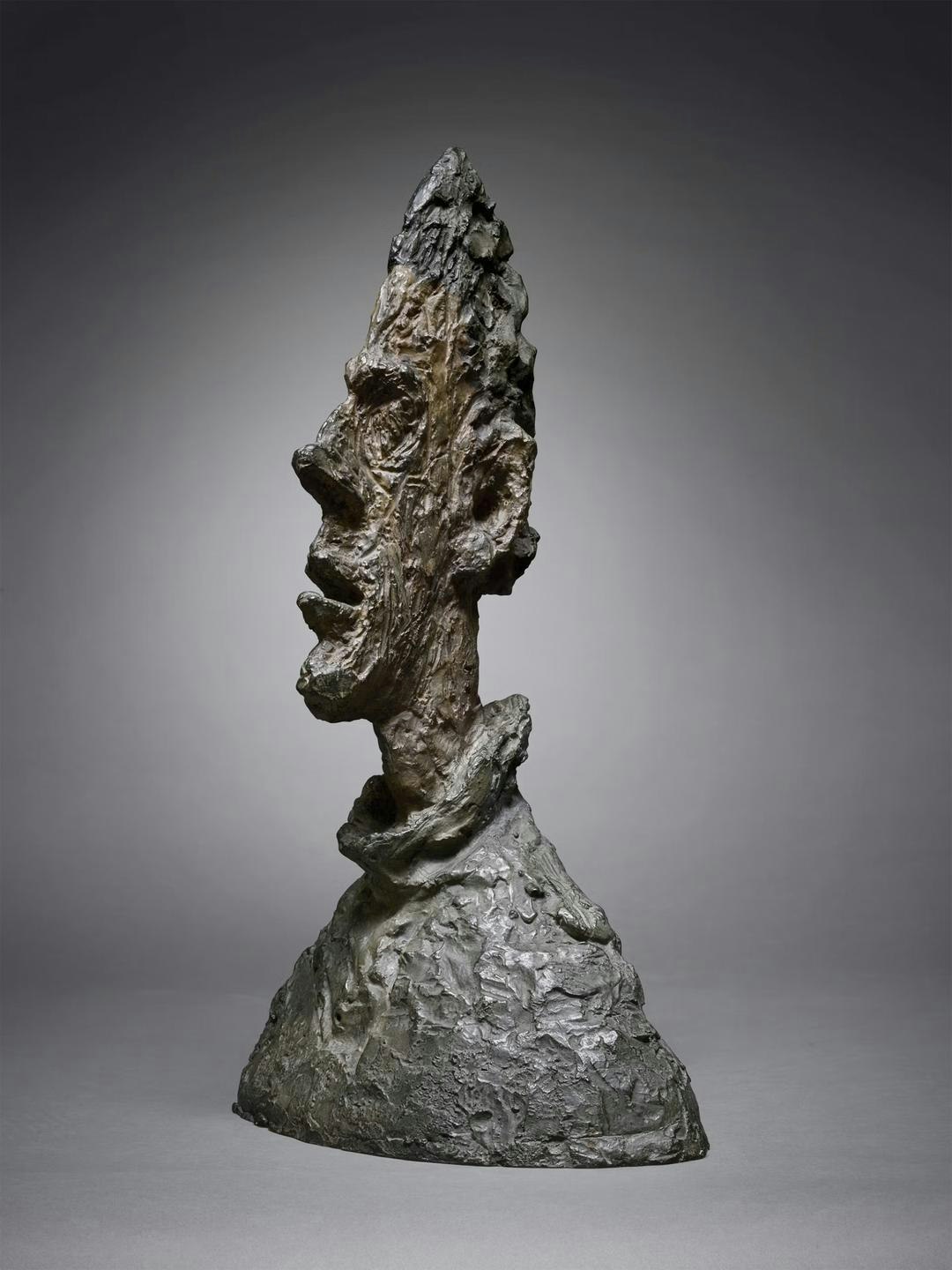This article is taken from the July 2025 issue of The Critic. To get the full magazine why not subscribe? Right now we’re offering five issues for just £25.
The international art market is enduring a lengthy “correction”. The post-pandemic froth having evaporated, global auction sales — the only reliable and publicly available sales data — are down for the second year in a row. Today, at the top end of the market there are fewer buyers and less competition for the most expensive works. Inevitably, vendors’ and buyers’ price expectations are mismatched.
This was brutally demonstrated when in May, Giacometti’s monumental bronze head Grande tête mince failed to sell at Sotheby’s New York. Priced to sell in excess of $70 million, the work was one of a set of five casts.
Another had sold in 2013 for $50m (exceeding its $35–$50m estimate), and in 2025 Sotheby’s pushed the estimate hard (perhaps to win the business). The vendor was possibly unwilling to recognise a weaker market in 2025. It had come to auction without a guarantee (i.e. pre-sold to a third party).

Meanwhile, the wider context is a contradictory one. According to Bain & Company, the global luxury goods market grew by 8–10 per cent in 2023 but contracted 2 per cent in 2024. The wealthy are still spending — but less and clearly not on art.
The major auction houses have staked much on building a secondary market for luxury — watches, jewellery, wine and handbags — as an entry point for buyers who may later return to buy a Basquiat. They have built expensive premises in the major entrepôts of luxury retail, Paris and Hong Kong.
But to date, buyers of luxury seemingly just stick with buying Louis Vuitton or Patek Philippe, and few go on to buy pictures by say, Lovis Corinth or Philippe de Champaigne.
And behind that ambition is the question about how the major art market players will adapt to the so-called Great Wealth Transfer.
This (apparently) $80 trillion shift of assets between generations — already under way in North America and Western Europe — represents the most significant economic event of the next two decades. The wealth generation is potentially massive, but younger, digital-native beneficiaries of this inherited wealth may be sceptical of legacy organisations.
By the same token, inheritance usually brings large art collections onto the market, but what if few are willing to spend vast sums buying art?
Disruption and innovation are badly needed to keep the art market going in these tough times. The conditions that supported two decades of growth to 2022 — globalisation, cheap capital and the unrelenting rise of ultra-high-net-worth individuals — are no longer guaranteed.
To survive, the major players must adjust to buyers who are younger, shrewder, and perhaps less sentimental or loyal to brands and personalities. They also have access to considerably more sale price data than was available to previous generations.
“What do the next generation of buyers actually want?” Hugo Nathan of Beaumont Nathan Art Advisory asked me. “A generation that, via the tech revolution, has been taught to question almost every societal norm, is potentially unwilling to simply collect along the same patterns as their parents and grandparents.”
Nathan believes the market may need to move away from the dominance of the contemporary sector, which has brought with it the fashion world’s natural obsession with what’s hot and what’s new.
Rather than be fuelled by the promise of a quick profit, he thinks that “art needs to be marketed once again as a luxury, a pleasure, even a noble pursuit” and calls for “a much more qualified salesforce to educate and encourage, beyond the lazy trope of art as investment”.
“There are no sacred cows today, and some deep reorganisation of the gallery and auction models may be needed to reinstate the thrill of collecting, as well as making the market profitable again.”
This now widely held sentiment suggests a shift in mechanics and tone is needed. Of course auction houses and dealers want to promote their works of art as if they are the Greatest Of All Time. But almost all major players rely on art advisors who will tell it like it is.
So why not cut back on this breathless over-marketing and the lengthy write-ups intended to add scholarly depth to a work? Promotion is important, but how about less theatre and more substance?
Collectors and the market still want stories, real stories — but how to tell them? In this, the market does have one enduring advantage: great works of art, when properly framed, have the power to arrest, persuade, enchant and endure. The trick is to find the language — and the audience — that recognises these values.












